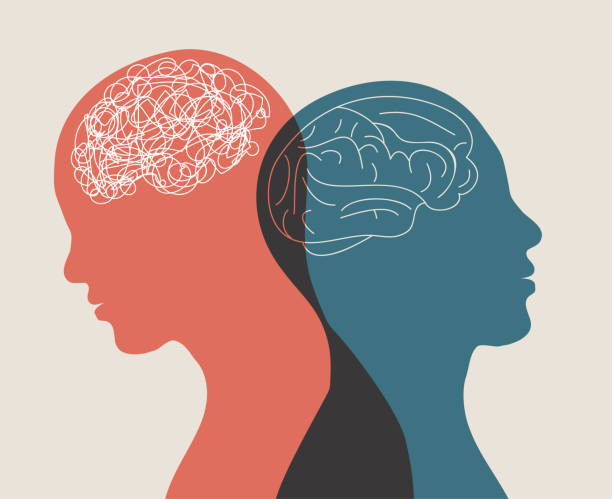Introduction
Have you ever noticed how a single positive trait in someone—like their charisma, good looks, or confidence—can color your entire perception of them? This cognitive bias, known as the Halo Effect, was first identified by psychologist Edward Thorndike in 1920. Thorndike observed that military officers tended to rate their subordinates’ physical appearance and demeanor as positively influencing their intelligence, leadership ability, and character. In essence, the Halo Effect describes how our overall impression of a person influences how we evaluate their specific traits.

How the Halo Effect Works
The Halo Effect operates as a mental shortcut, allowing us to make quick judgments based on limited information. While this can save time and cognitive effort, it often leads to distorted perceptions. For example, if someone appears friendly and approachable, we might unconsciously infer that they are also competent, reliable, or kind. This bias is rooted in our brain’s tendency to simplify complex information and fill in gaps using assumptions.
Moreover, the reverse can also occur in what is known as the Horn Effect, where one negative trait (e.g., rudeness) leads us to assume that a person possesses other unfavorable qualities, such as incompetence or dishonesty.
Read More- Self-Talk
Scientific Studies Supporting the Halo Effect
Numerous studies have demonstrated the pervasive influence of the Halo Effect across different domains:
- Physical Attractiveness- Research by Dion, Berscheid, and Walster (1972) found that people often assume that physically attractive individuals are more intelligent, competent, and socially skilled—a phenomenon referred to as the “what is beautiful is good” stereotype.
- Job Interviews- A study published in Personnel Psychology (Macan et al., 1990) showed that first impressions during interviews significantly influenced overall evaluations of candidates, regardless of objective measures of performance.
- Education- A study by Clifford and Walster (1973) revealed that teachers were more likely to perceive attractive students as more capable and intelligent compared to their less attractive peers, which could affect how they treat and evaluate students over time.
Real-World Examples of the Halo Effect
- In the Workplace- Imagine a new hire who is confident and well-spoken during meetings. Colleagues and managers may automatically assume this person is highly competent and a natural leader. These assumptions can result in preferential treatment, even if the individual’s actual performance doesn’t justify such perceptions.
- Celebrity Endorsements- Marketers frequently capitalize on the Halo Effect by using celebrities to endorse products. For example, a famous athlete endorsing a sports drink creates the impression that the product must enhance performance, even though the athlete’s expertise in sports doesn’t necessarily translate to product quality.
- Politics- Politicians often benefit (or suffer) from the Halo Effect. A charismatic leader who exudes confidence and charm may be perceived as trustworthy and capable, even if their policies or actions don’t align with those qualities.
- Consumer Behavior- The packaging of a product can influence how we judge its quality. If a product is visually appealing, we might assume it is also more effective, healthier, or higher in value.

Overcoming the Halo Effect
While it’s nearly impossible to eliminate cognitive biases entirely, there are steps we can take to minimize the impact of the Halo Effect in our decision-making-
- Pause and Reflect- Take a moment to evaluate whether your judgment is based on objective evidence or influenced by initial impressions.
- Focus on Facts- Make a conscious effort to gather and rely on factual information rather than assumptions. For example, in hiring decisions, structured interviews and objective performance metrics can help counteract bias.
- Seek Multiple Perspectives- Consulting with others can help balance out individual biases and lead to more accurate evaluations.
Why It Matters
The Halo Effect can have far-reaching consequences, from influencing hiring decisions and academic outcomes to shaping consumer behavior and political opinions. Recognizing this bias is crucial for promoting fairness and equity in both personal and professional contexts. By being mindful of how first impressions can skew our judgments, we can strive to form more balanced and informed perspectives.
Conclusion
The Halo Effect highlights the complexity of human perception and decision-making. While our brains are wired to take shortcuts, these biases can distort reality and lead to unfair or inaccurate evaluations. By becoming aware of how the Halo Effect operates, we can take deliberate steps to counteract its influence and ensure our judgments are as objective and fair as possible.
References
Dion, K., Berscheid, E., & Walster, E. (1972). What is beautiful is good. Journal of Personality and Social Psychology, 24(3), 285–290.
Clifford, M. M., & Walster, E. (1973). The effect of physical attractiveness on teacher expectations. Sociology of Education, 46(2), 248–258.
Macan, T. H., Avedon, M. J., Paese, M., & Smith, D. E. (1990). The effects of applicants’ reactions to employment selection methods on job acceptance intentions: A field experiment. Personnel Psychology, 43(4), 695–708.
Thorndike, E. L. (1920). A constant error in psychological ratings. Journal of Applied Psychology, 4(1), 25–29.
Subscribe to PsychUniverse
Get the latest updates and insights.
Join 3,022 other subscribers!
Niwlikar, B. A. (2025, January 26). What is the Halo Effect and 3 Incredible Ways to Overcome It. PsychUniverse. https://psychuniverse.com/halo-effect/



